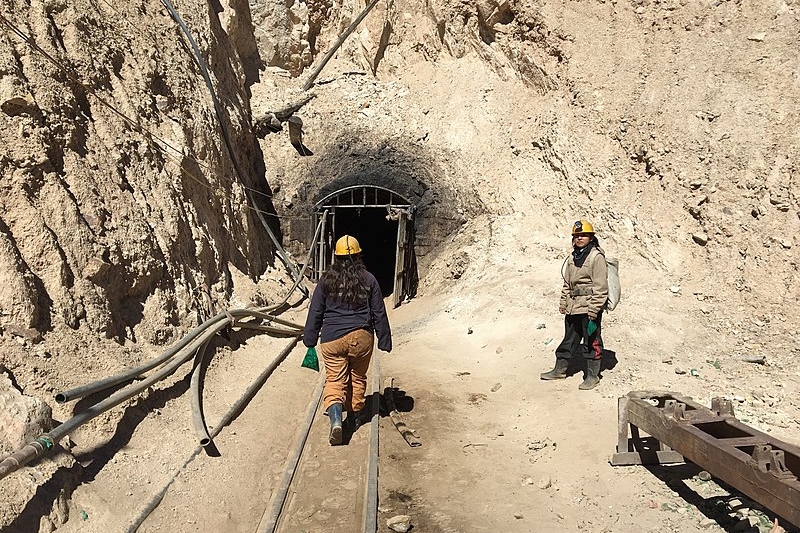Education to prevent child labor in Bolivia
 In Bolivia, “one of the poorest nations in Latin America,” children face alarming levels of monetary poverty, affecting 48% of children overall and disproportionately impacting 65% of indigenous girls. These figures starkly contrast with the high national poverty rate of 36.4% and an extreme poverty rate of 11.1% recorded in 2021. These circumstances fuel the widespread prevalence of child labor in Bolivia, with 286,890 children aged 7-14 working as of 2022, many of them working in the mining industry.
In Bolivia, “one of the poorest nations in Latin America,” children face alarming levels of monetary poverty, affecting 48% of children overall and disproportionately impacting 65% of indigenous girls. These figures starkly contrast with the high national poverty rate of 36.4% and an extreme poverty rate of 11.1% recorded in 2021. These circumstances fuel the widespread prevalence of child labor in Bolivia, with 286,890 children aged 7-14 working as of 2022, many of them working in the mining industry.
With global silver demand surging by 18% in 2023, mining companies are turning their attention to Bolivia, a country that formerly supplied 20% of the world’s silver. However, historical Spanish involvement in Bolivia’s silver mining has tarnished its reputation with exploitation. Consequently, efforts to prevent a potential increase in child labor in Bolivia and the mining industry are underway through educational initiatives led by organizations such as PASOCAP.
History of Mining
Cerro Rico, meaning Rich Mountain, towers over the city of Potosí and is famous for the world’s “richest silver deposit” discovered in 1545. During the Spanish conquest in 1532, the Spanish exploited indigenous expertise through the mita, a forced labor practice that resulted in a significant decline in the Andean indigenous population while funding the expansion of the Spanish empire.
Toxic dust and fumes exposed miners to perilous conditions, which earned Cerro Rico the name “The Mountain That Eats Men.” Estimates suggest that the forced labor at the mine claimed the lives of 8 million indigenous people and African slaves. Despite the arrival of the liberator Simon Bolivar in 1825, the mita persisted until its abolition in 1832, according to Kris Lane’s study.
Mining in Bolivia Today
Mining continues to be the primary economic activity in Potosí. However, with much of the wealth and resources already extracted, families face financial struggles, relying on the scant earnings from what remains of the plundered riches. In the past, UNICEF has stated that poverty and family breakdown are the primary causes pushing children into mining labor. Despite the Bolivian government’s classification of mining as one of the worst forms of child labor in Bolivia for its impact on health and education, according to a 2022 report, children are compelled to take risks and make sacrifices to support their families’ livelihoods.
Children who are as young as 15 have contracted silicosis, a lung disease that exposure to silica dust causes, resulting in symptoms such as fatigue, coughing, loss of appetite and death. ABC News reveals that a lack of investment and safety inspections has led to inadequate safety measures, including insufficient safety gear, power and ventilation. Additionally, miners face other hazards such as toxic gases, mine collapses, dynamite handling and electrocution from outdated machinery, according to a 2023 report. These conditions perpetuate a cycle of poverty and miners’ low life expectancy of about 45 years.
Education for the Elimination of Child Labor
Nadia Alejandra Cruz Tarifa, the Vice Minister of Equal Opportunities at Bolivia’s Ministry of Justice and International Transparency, shed light on the significant role poverty plays in driving child labor in Bolivia during her address to the 2023 Committee on the Rights of the Child.
During her speech, she emphasized the pivotal link between education and poverty elimination in Bolivia, stressing the prevalence of school dropouts as a significant challenge for the state. She applauded the effectiveness of the Juancito Pinto bonus, a government initiative that offers annual monetary incentives to students and their families, successfully encouraging millions to stay in school, OHCHR reports. By addressing financial struggles, this initiative allows students to pursue education rather than resorting to hazardous labor like mining.
The Work of PASOCAP
After a decade of dedicated effort, PASOCAP collaborated with the working children of Potosí, establishing a dedicated day of commemoration for the dignity of working children in the city on December 8. This milestone also includes the enactment of Municipal Law No. 419, regulating fund allocation for initiatives addressing protection and prevention issues concerning working children. PASOCAPS’s Casa NAT’s program enabled this achievement by empowering young children to act as agents of change, exercising their citizenship and contributing to sustainable development.
Among the institution’s many initiatives is the InterSol Program, which targets “families, guards, watchmen, children, adolescents and young people” living and working alongside Cerro Rico. It aims to empower individuals regarding their constitutional and labor rights through workshops, emphasising laws safeguarding children and women while disseminating strategies to combat child abuse and reduce child labor in Bolivia.
Another initiative, “Protagonists of Peace” supports children struggling with violence, social disadvantage and the direct impacts of mining activities. It aims to equip them with life skills, enhance opportunities and promote advocacy for their rights. The primary goal is to improve the living standards of children and families linked to mining through comprehensive training, empowering them to influence municipal policies. Additionally, the project prioritizes health and nutrition, ensuring access to primary health care services for participants.
Instead of consigning children to work in the mines of Cerro Rico, PASOCAP is providing them with opportunities to challenge the industry’s structures and develop skills that offer genuine and sustainable alternatives that break the cycle of poverty. The Cerro Rico silver mines provide a microcosm through which to examine the high rates of child poverty and child labor in Bolivia. Acknowledging the efforts of institutions like PASOCAP in protecting children is crucial in light of potential future mining activities in the country.
– Ben Miley-Smith
Photo: Wikimedia Commons
